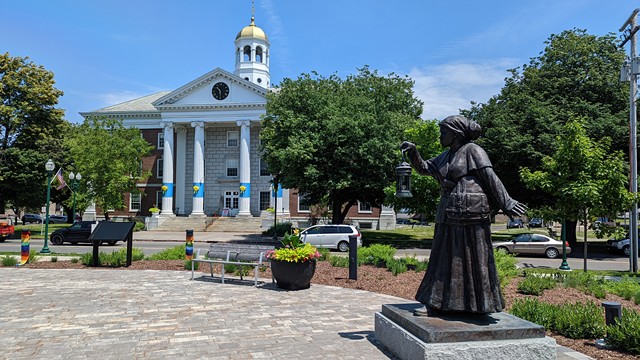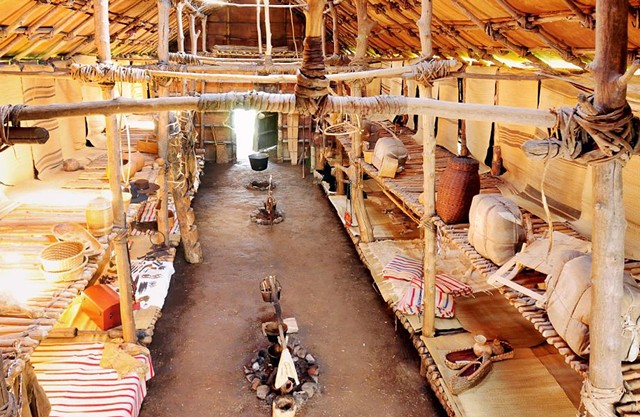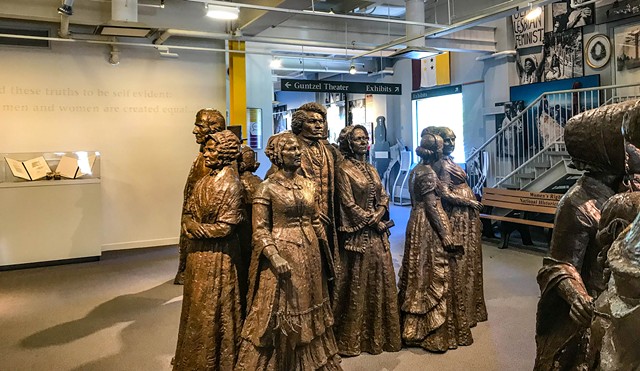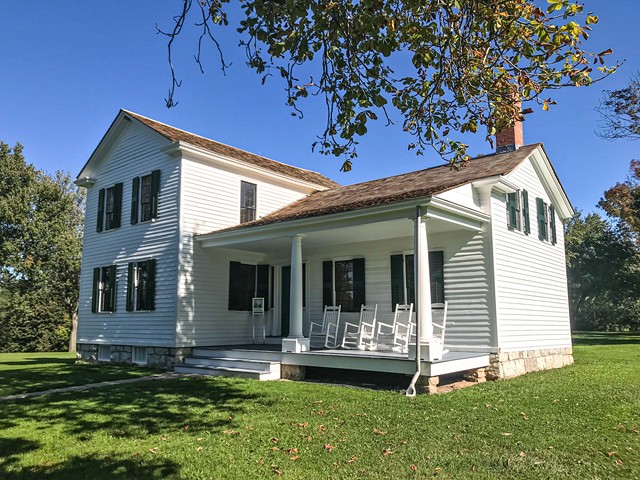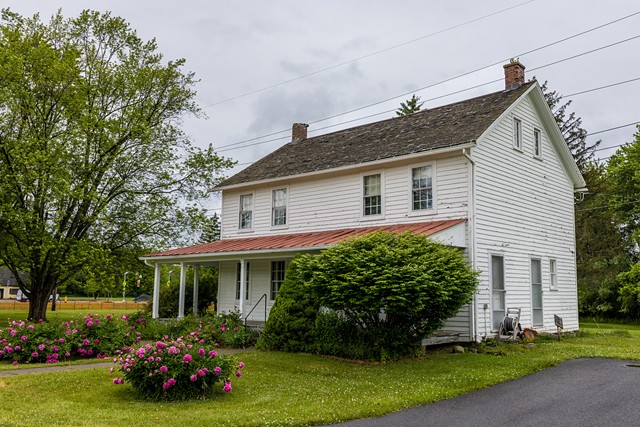[
{
"name": "500x250 Ad",
"insertPoint": "5",
"component": "15667920",
"parentWrapperClass": "",
"requiredCountToDisplay": "1"
}
]
For those yearning for a summer road trip, a journey through New York's equal rights history provides a scenic look at reform. The Finger Lakes region, once a vibrant hub of the suffrage, anti-slavery and Native American rights movements, is home to many captivating sites that bring the stories to life.
Judith Wellman, Ph.D., principal investigator for Historical New York Research Associates and professor emerita at SUNY Oswego, cited religious influence in the Finger Lakes area as the fuel for several important social justice movements during the early 19th century.
"As protestant christians began thinking about how to apply their beliefs to the real world, passions for political and social change were ignited,” she said. “There were lots of different ways of doing that. Still, a group of people did become committed to reform movements, especially the abolition of slavery and temperance, and sometimes women's rights."
So many fires of revivalism swept across this region that some people began to call it a 'burnt district' or a 'burned over district.'
"It became a bonfire that lit many other movements," said Wellman.
Industrialization, especially through new transportation routes like railroads and the Erie Canal, and religious revivalism in upstate New York facilitated the spread of progressive ideas, laying the groundwork for increased participation in equal rights movements.
While not part of the aforementioned religious revival movement, the Quakers, or 'Friends,' were a religious group that played a pivotal role in the social justice movements of the time. The 1816 Farmington Meetinghouse, which is currently being restored, has been recognized as a national historic site for equal rights, where members advocated for Haudenosaunee people, women, and African Americans.
"They were very active with abolitionism and women's rights and also served as allies for the Seneca people," said Wellman, who sits on the non-profit’s board of trustees.
In Farmington, Ontario County, and through programs in conjunction with Ganondagan State Historic Site in nearby Victor, the public can learn about Quaker roles in helping to protect Seneca homelands beginning in 1840. Historians aim to bring this lesser-known local story to light.
Students from Professor Gretchen Sorin’s exhibits class at the Cooperstown Graduate School of Museum Studies recently worked with designer Doreen Nicola to create the first exhibit for the site, which will eventually be open to the public. Another collaborative community effort led by University of Idaho Professor of Education Rebekka Boysen-Taylor will create a curriculum for area students based on the Underground Railroad — the metaphorical route taken by enslaved African Americans on their journey to freedom.
This year, the 1816 Quaker Farmington Meetinghouse is sponsoring a series of free events with partner sites like Mount Hope Cemetery in Rochester and Women's Rights National Historical Park in Seneca Falls.
The Wesleyan Chapel at the Seneca Falls National Park was the location of the first Women’s Rights Convention in 1848, where one-third of the 100 signers of the Declaration of Sentiments were Quakers. Many of the event participants also supported the abolitionist movement. In Seneca Falls and Waterloo, you can tour the homes of inspirational convention organizers Elizabeth Cady Stanton and Mary Ann McClintock, a Quaker.
"Standing in the Stanton house, listening to a ranger talking about Stanton's life there, brings it alive and makes it more impactful and more memorable. I truly believe the plaster and wood absorb the historic energies and continue to share them," said Judy Hart, a founding Seneca Falls National Park superintendent who wrote the book “A National Park for Women's Rights: The Campaign That Made It Happen” about her experience.
In Auburn, 25 miles east, is Harriet Tubman National Park. Known as the "Moses of Her People," the Underground Railroad conductor lived in Auburn during her later years, where she worshipped at Thompson Memorial A.M.E. Zion Church. The newly restored church opened in June; the Harriet Tubman Home, which is operated by a nonprofit park partner, is another must-see site for equal rights heritage travelers.
At Auburn’s Seward House Museum, delve into the life of Lincoln's Secretary of State William Henry Seward, an abolitionist and a good friend of Harriet Tubman. Seward's wife, Frances, who was raised as a Quaker, was Tubman's ally and active in women's suffrage and the Underground Railroad.
Drive 30 minutes southeast to the Howland Stone Store Museum in Aurora, Cayuga County, to see a “ticket to freedom” and learn about Underground Railroad stationmaster and Quaker store owner Slocum Howland. His daughter, Emily Howland, was a leader in the women's suffrage movement. In 2022, she was inducted into the National Women’s Hall of Fame in Seneca Falls, which celebrated its newly renovated space on July 12.
For more, visit A Guide to New York State’s Equal Rights Destinations.
Jackie Perrin is a freelance contributor to CITY.
Judith Wellman, Ph.D., principal investigator for Historical New York Research Associates and professor emerita at SUNY Oswego, cited religious influence in the Finger Lakes area as the fuel for several important social justice movements during the early 19th century.
"As protestant christians began thinking about how to apply their beliefs to the real world, passions for political and social change were ignited,” she said. “There were lots of different ways of doing that. Still, a group of people did become committed to reform movements, especially the abolition of slavery and temperance, and sometimes women's rights."
So many fires of revivalism swept across this region that some people began to call it a 'burnt district' or a 'burned over district.'
"It became a bonfire that lit many other movements," said Wellman.
Industrialization, especially through new transportation routes like railroads and the Erie Canal, and religious revivalism in upstate New York facilitated the spread of progressive ideas, laying the groundwork for increased participation in equal rights movements.
While not part of the aforementioned religious revival movement, the Quakers, or 'Friends,' were a religious group that played a pivotal role in the social justice movements of the time. The 1816 Farmington Meetinghouse, which is currently being restored, has been recognized as a national historic site for equal rights, where members advocated for Haudenosaunee people, women, and African Americans.
"They were very active with abolitionism and women's rights and also served as allies for the Seneca people," said Wellman, who sits on the non-profit’s board of trustees.
In Farmington, Ontario County, and through programs in conjunction with Ganondagan State Historic Site in nearby Victor, the public can learn about Quaker roles in helping to protect Seneca homelands beginning in 1840. Historians aim to bring this lesser-known local story to light.
Students from Professor Gretchen Sorin’s exhibits class at the Cooperstown Graduate School of Museum Studies recently worked with designer Doreen Nicola to create the first exhibit for the site, which will eventually be open to the public. Another collaborative community effort led by University of Idaho Professor of Education Rebekka Boysen-Taylor will create a curriculum for area students based on the Underground Railroad — the metaphorical route taken by enslaved African Americans on their journey to freedom.
This year, the 1816 Quaker Farmington Meetinghouse is sponsoring a series of free events with partner sites like Mount Hope Cemetery in Rochester and Women's Rights National Historical Park in Seneca Falls.
The Wesleyan Chapel at the Seneca Falls National Park was the location of the first Women’s Rights Convention in 1848, where one-third of the 100 signers of the Declaration of Sentiments were Quakers. Many of the event participants also supported the abolitionist movement. In Seneca Falls and Waterloo, you can tour the homes of inspirational convention organizers Elizabeth Cady Stanton and Mary Ann McClintock, a Quaker.
"Standing in the Stanton house, listening to a ranger talking about Stanton's life there, brings it alive and makes it more impactful and more memorable. I truly believe the plaster and wood absorb the historic energies and continue to share them," said Judy Hart, a founding Seneca Falls National Park superintendent who wrote the book “A National Park for Women's Rights: The Campaign That Made It Happen” about her experience.
In Auburn, 25 miles east, is Harriet Tubman National Park. Known as the "Moses of Her People," the Underground Railroad conductor lived in Auburn during her later years, where she worshipped at Thompson Memorial A.M.E. Zion Church. The newly restored church opened in June; the Harriet Tubman Home, which is operated by a nonprofit park partner, is another must-see site for equal rights heritage travelers.
At Auburn’s Seward House Museum, delve into the life of Lincoln's Secretary of State William Henry Seward, an abolitionist and a good friend of Harriet Tubman. Seward's wife, Frances, who was raised as a Quaker, was Tubman's ally and active in women's suffrage and the Underground Railroad.
Drive 30 minutes southeast to the Howland Stone Store Museum in Aurora, Cayuga County, to see a “ticket to freedom” and learn about Underground Railroad stationmaster and Quaker store owner Slocum Howland. His daughter, Emily Howland, was a leader in the women's suffrage movement. In 2022, she was inducted into the National Women’s Hall of Fame in Seneca Falls, which celebrated its newly renovated space on July 12.
For more, visit A Guide to New York State’s Equal Rights Destinations.
Jackie Perrin is a freelance contributor to CITY.
